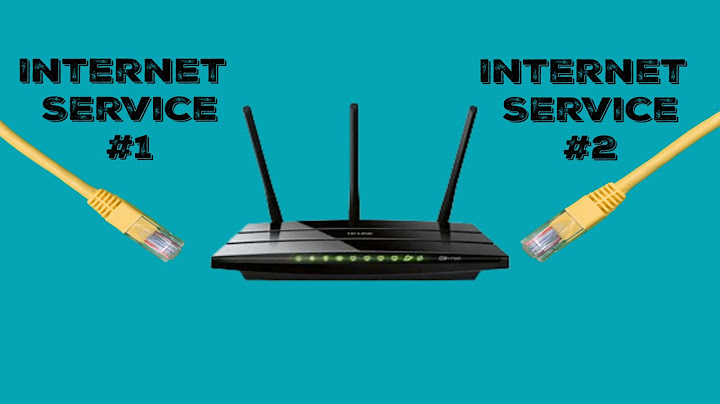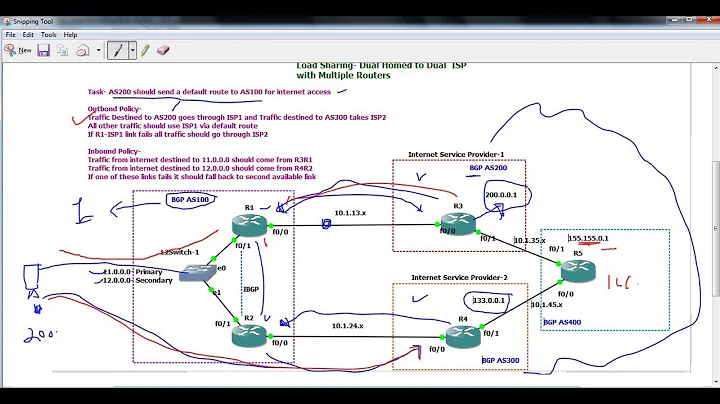How should I connect 2 ISPs to a single LAN?
You've been given some good information. But there is a more straight forward route here.
You mentioned both routers are on 192.168.0.1. Change the router for ISP 2 to 192.168.0.2 or some other unused IP address in this same range. Disable DHCP on this second router.
Connect everything together via a switch. Or if you have enough ports just connect both routers together by adding a cable between their LAN ports.
Next, change the default gateway on each machine (assuming they are all using a statically assigned IP) so that machines that need to use ISP 1 use 192.168.0.1 and machines that need to use ISP 2 use 192.168.0.2.
You'll have to make sure all devices are using a unique IP address on the network. Also make sure only one DHCP server is active.
Now, all devices can see each other on the same network but each machine will use whatever ISP you choose depending on it's gateway setting.
There aren't any drawbacks I can think of. This is a simple approach and gives you the flexibility to change an ISP assigned to a machine quickly. There is nothing wrong with having two routers on the same network.
Related videos on Youtube
Comments
-
 Catweasel over 1 year
Catweasel over 1 yearI have the following equipment, which I want to connect as described to two ISPs.
1 internet server - ubuntu 16.04 - to ISP 1
2 content creator - win7 - to ISP 1
3 HTPC - ubuntu 16.04 - to ISP 2
4 Sony BluRay player - to ISP 2
5 admin - ubuntu 16.04 - to ISP 1 -- needs to mount drives from computers 1, 2, and 3, admin both routers, and be a file server to HTPC.
I think what I may need is to connect it all to a switch, but I don't have one to test. Another possibility might be extra lan cards, or wireless cards.
What would be best, and are there any pitfalls I need to avoid in the topology?
If I need to supply any more info I'll be happy to do so.
Speaking of which, as a pre-edit if you will, everything is in one 16x16 room, mostly on one wall.
ISP 1 is suitable for the server, whereas ISP 2 will not provide a properly formatted reverse DNS. AOL and Comcast mail servers insist on that.
ISP 2 gives me more bandwidth, so that Netflix etc. don't detract from our customers' experience.
Both routers are set to 192.168.0.1, but that can change, of course.
-
 Vomit IT - Chunky Mess Style almost 7 yearsI would say put each ISP router on separate/different subnets and then setup routing rules in between to route between the subnets. Just use the IP address for each ISP router as the defauly gateway address for the NICs on each of the devices.
Vomit IT - Chunky Mess Style almost 7 yearsI would say put each ISP router on separate/different subnets and then setup routing rules in between to route between the subnets. Just use the IP address for each ISP router as the defauly gateway address for the NICs on each of the devices. -
 Catweasel almost 7 yearsIt sounds like that might work, but sadly I don't know how.
Catweasel almost 7 yearsIt sounds like that might work, but sadly I don't know how. -
lungj almost 7 yearsWhat's the intent of the two ISPs? Is it for failover? Load balancing? Lower latency to certain hosts? Using connections based on connection type (e.g., your servers might only work on one of the two)? Getting an extra public IP address for your devices? Something else? (This impacts what you need to do/the complexity)
-
 Vomit IT - Chunky Mess Style almost 7 yearsWhat are the current IP addresses to each of the ISP routers? What is this now? If you don't know this at least you're stuck until you get someone that does.
Vomit IT - Chunky Mess Style almost 7 yearsWhat are the current IP addresses to each of the ISP routers? What is this now? If you don't know this at least you're stuck until you get someone that does. -
 Catweasel almost 7 yearsI still need an answer. I've added clarifications, @lungj
Catweasel almost 7 yearsI still need an answer. I've added clarifications, @lungj
-
-
lungj almost 7 yearsI think this is a good approach for a small network and may well be the best solution for OP (I'm still not exactly sure what OP's situation is). I can think of a few drawbacks, if you want to edit your answer to include them: lack of partitioning (if desired); need to reconfigure machines individually instead of a centralized point (this even more annoying in a heterogenous network) -- although running a DHCP server with custom configurations can largely solve this at the expense of initial complexity and the need to reload DHCP configurations;
-
lungj almost 7 yearsoptions for server redundancy reduced/non-existent; and inability to use both Internet connections simultaneously on the same machine for different purposes. If OP doesn't need these things, you're right: this is a better approach.
-
Appleoddity almost 7 yearsYour comment is valid, but based on the content of the question, this is a small network and the OP already had these drawbacks. There are certainly "enterprise" solutions but what I posted is just one simple approach that directly answers the question.




